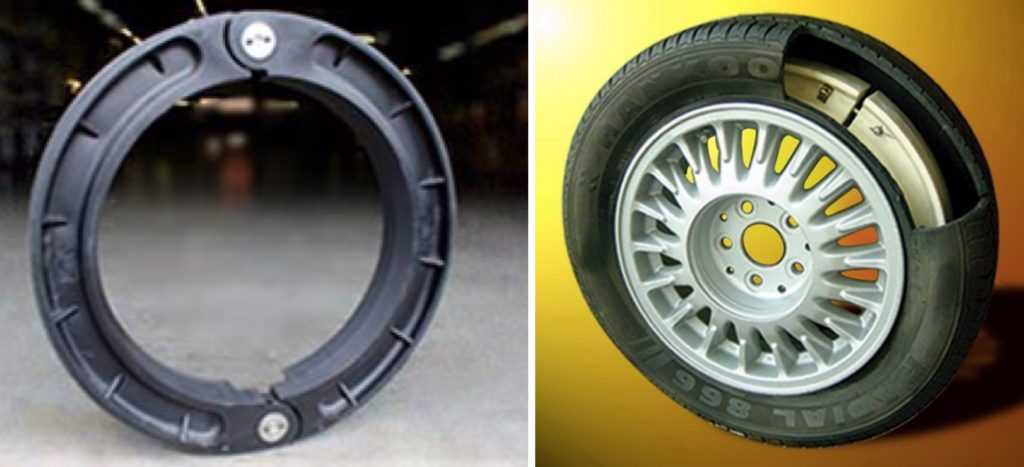It’s important to know what kind of tires you have on your car, thus if you are ever faced with an adverse situation, you’ll know what you safely can and cannot do. BMW equips the majority of their cars with run flat tires. They do this because it provides their customers with a few added benefits:
How can you identify if you have BMW run flat tires or not? All the information you need is on the sidewall. For BMW vehicles, what you will want to look for is the RSC label.
If you are on run flat tires, most manufacturers recommend replacement when they have been driven in a severely underinflated or zero pressure condition. This is because the integrity of their internal structure cannot be confirmed.
Now if you are on standard tires, and your tire becomes damaged, it may be repaired if it meets the following criteria:
The proper way to have a flat tire repaired is to fill the puncture hole from the inside, then apply a patch on top of the repair. Do not have your tire plugged. Ever. Plug repairs do not involve taking the tire off the wheel for a proper inspection. A plug is simply inserted into the punctured area, making it unreliable. Insist on a full inspection and have your tire center demount, then inspect the interior and exterior of the tire. Only after a thorough inspection should a tire be repaired.
Only after a thorough inspection should a tire be repaired.
If the three criteria above are not met, then you will have to replace the damaged tire. Don’t forget to inspect the tire on the other side of the car, if that one has a low tread depth, you will want to at least replace that one too.
Michelin recommends replacing all four tires at the same time, however if replacing only two new tires, be sure that the new tires are the same size and tire type as the current tires and that the dealer always installs the new tires on the rear axle of the vehicle when possible. If there is ever any question to the integrity of the tire, please just replace it! No amount of money is worth the safety of you and your passengers.
Run-flat tire repair procedures recommended by the U. S. Tire Manufacturers Association (USTMA) are the same for both run-flat and non-run-flat tires.
S. Tire Manufacturers Association (USTMA) are the same for both run-flat and non-run-flat tires.
Photo courtesy of Goodyear Tire and Rubber Co.
What should a fleet professional know when utilizing assets with run-flat tire versus a non-run-flat tire? According to mounting and balancing equipment manufacturers and tire manufacturers the consensus is a run-flat’s unique construction makes them more difficult to mount and demount.
However, there is no consensus on whether or not run-flat tires can be repaired. Tire manufacturers often defer to the vehicle manufacturer’s replacement tire restrictions and recommendations.
Michelin North America Inc., for example, allows its run-flat tires (Zero Pressure) to be repaired under certain guidelines. However, repairing the original equipment run-flat tires on a BMW isn’t an option, per its owner’s manual.
Run-flat tire repair procedures recommended by the U.S. Tire Manufacturers Association (USTMA) are the same for both run-flat and non-run-flat tires. USTMA does preface that by advising vehicle owners to consult the tire manufacturer for its repair policy and, if applicable, recommended repair procedures.
USTMA does preface that by advising vehicle owners to consult the tire manufacturer for its repair policy and, if applicable, recommended repair procedures.
When asked if there are any instances where a run-flat tire can be repaired, a Pirelli Tire LLC spokesperson said no, a run-flat should never be repaired.
According to Pirelli’s Run-Flat Hazzard Policy, “damaged run-flat tires or run-flat tires that have experienced a loss of pressure should immediately be replaced with another run flat tire of identical size and service description (load index and speed symbol).”
A technical services bulletin from Yokohama Tire Corp. makes it clear Yokohama ZPS run-flat tires are not to be repaired following a puncture “or other tire disablement.”
“ZPS run-flat tires are covered by the Yokohama standard limited warranty that provides for tire replacement under specified conditions,” the bulletin reads. “Your ZPS tire will be replaced on a prorated basis based on remaining tread depth when the tire has been damaged due to a tread area puncture within the repairable area and limits defined by (USTMA). ”
”
Continental Tire the Americas LLC does not recommend any repair to Continental SSR (Self Supporting Runflat) tires. The company’s explanation is as follows: “Even a trained tire specialist may be unable to recognize internal structural damage to a Self Supporting Runflat (SSR) tire resulting from having been driven in an under inflated or zero pressure condition. Such damage may not be visible on the surface of the inner liner or sidewall, making it impossible to determine the tire suitability for repair. Continental does not recommend any repair to Continental SSR tires. Note: Continental advises if a tire is returned under complaint and reason for the product’s disablement is in any way associated with a repair or the reason for repair, the manufacturer’s warranty is invalidated.”
“Repairs of run-flats are a major concern,” says Chris Davis, Continental’s technical product service manager. “Always refer to the tire manufacturer’s recommendations on repairs as it can vary by manufacturer.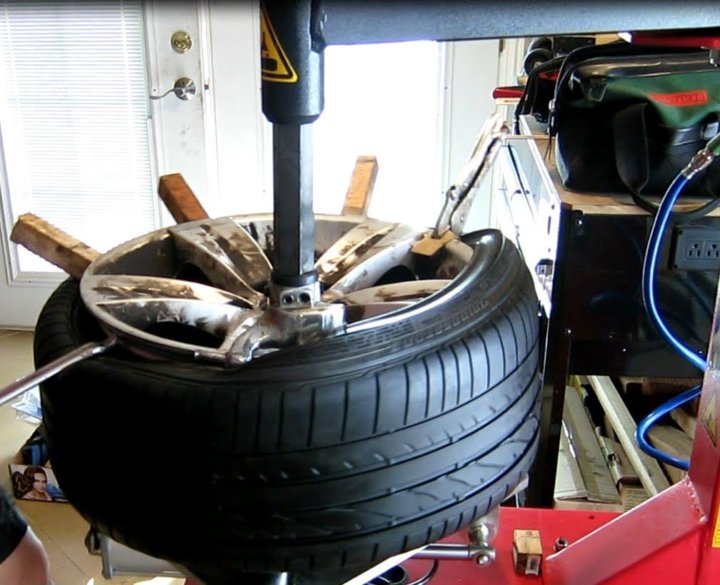 Some allow a repair, some don’t and some allow multiple repairs, noting that each repair lowers the speed rating of the tire. Consider your dealership’s liability as the ‘tire expert’ agreeing the tire is not damaged, should you repair the tire without knowing damage between the layers.
Some allow a repair, some don’t and some allow multiple repairs, noting that each repair lowers the speed rating of the tire. Consider your dealership’s liability as the ‘tire expert’ agreeing the tire is not damaged, should you repair the tire without knowing damage between the layers.
“Run-flat tires, by design, have a very thick, stiff compound in the sidewall,” he said. It is typically not the same material that you can visualize on the inside or outside of the tire. If there is a separation between those layers, the dealer and the customer may not know about the condition until the tire has a second incident of low pressure causing the run flat tire not to work as designed, leaving the customer stranded on the highway or worse, having a rapid air loss and instability of control.
“Use your best judgment based on the tire manufacturer’s suggestions (and) customer safety, and if in doubt, contact the tire manufacturer’s customer service for recommendations,” he added.
Bridgestone Americas Inc.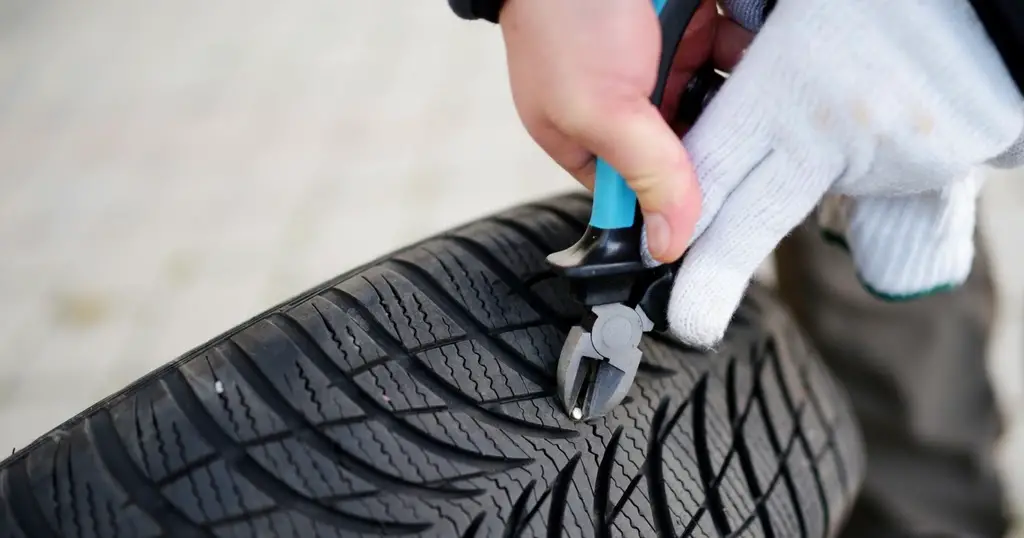 has a different view.
has a different view.
“Under certain circumstances, run-flat tires can be repairable,” said Robert Saul, director of consumer product strategy for Bridgestone Americas Tire Operations LLC.
There is no consensus whether run-flat tires can be repaired. Tire manufacturers often defer to the OEM's replacement tire recommendations.
“Guidelines vary by vehicle manufacturer, so it’s important for dealers to always abide by the vehicle manufacturer’s recommendations. Many tire manufacturers also will publish their repair and service guidelines in the form of technical bulletins, so dealers can check to see if the manufacturer of the tire they are servicing has a technical bulletin that they can refer to as well.
“In certain instances, a run-flat tire can be repaired, provided it meets specific guidelines,” said Saul. “These guidelines are contingent upon how far the run-flat tire was driven at low inflation conditions, the amount of air loss experienced and the overall condition of the tire.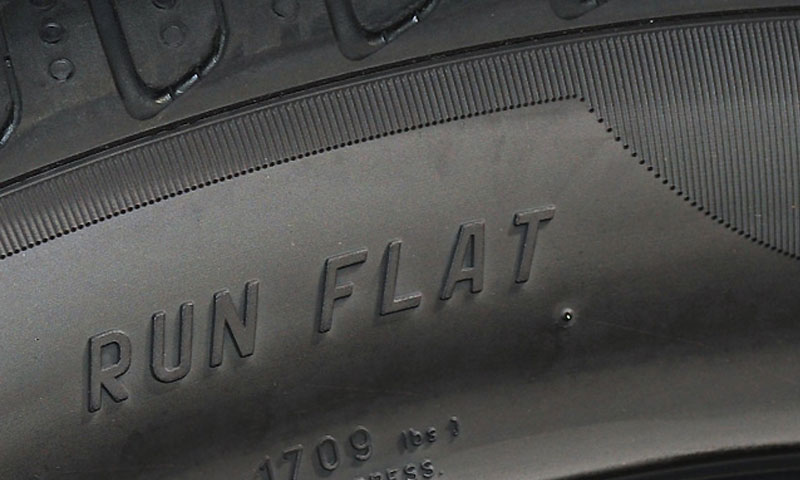 A run-flat tire that has experienced a puncture or loss of pressure must be thoroughly inspected for any resulting damage to determine if it can be put back in service.”
A run-flat tire that has experienced a puncture or loss of pressure must be thoroughly inspected for any resulting damage to determine if it can be put back in service.”
Juan Britos, senior technical services specialist for Hankook Tire America Corp., says Hankook’s run-flat models “can be repaired in the same manner as our standard versions. We design our tires to be repaired as simply as possible."
Pete Liebetreu, vice president of marketing for Hunter Engineering Co., said run-flat tires from European and Asian OEM manufacturers are very often mounted to a special wheel with an Eh3 (for “extended hump”) bead seat. Nokian “Flat Run” tires are one of many examples.
“We see these wheels every day in the U.S. on BMW, Lexus, Mercedes, Infinity, Toyota, Audi and other vehicles,” he said.
“The Eh3 wheel actually creates much of the difficulty in servicing these wheels, more than tire stiffness does. Eh3 means the wheel has an extended safety hump, which helps the deflated run-flat stay on the wheel properly in the event of a puncture,” he added.
“For the tire changer though, that extended hump makes it even harder to service. That’s because the already stiff tire needs to be pushed even further down to be in the drop center for demounting or mounting. Many technicians miss this and end up struggling with the tire that they could easily service if they pressed a little more on the key points with one of the press arms I mentioned earlier.”
A spokesperson from Bridgestone Americas Inc. said Eh3 (and Eh3+) wheels provide bead retention characteristics desired by car companies; in many cases they help extend run-flat operating distances, particularly at reduced loads.
“While Eh3/Eh3+ wheels are considered components of an extended mobility system, they are not explicitly restricted from use without other system components. In other words, Eh3/Eh3+ wheels may be able to be used with conventional tires or with conventional valves (without TPMS sensors).”
According to Bridgestone’s warranty manual, Bridgestone and Firestone RFT tires should never be replaced or mixed with conventional tires unless on an emergency or temporary basis.
This feature orginially appeared in Modern Tire Dealer, a Bobit publication.
In Russian RunFlat translates as "flat driving" or driving on a flat tire. Tire manufacturers use different run flat designations (Example: Goodyear RunOnFlat (EMT), Bridgestone RFT, Michelin ZP, Continental SSR, Pirelli Run Flat, Dunlop RunOnFlat (DSST), Nokian Flat Run, Hankook HRS, Yokohama ZPS)
The Run Flat technology is based on the concept of reinforced tire sidewalls. When a conventional tire deflates, it simply sags under the weight of the car, the beads move away from the rim and the sidewalls flatten onto the road. The weight completely destroys the tire in a few kilometers. The reinforced sidewalls of the Run Flat tires keep the tire on the rim and successfully support the car's weight after a puncture and complete loss of pressure. At the same time, all dynamic vehicle security systems such as ABS, DSC, CBC, etc.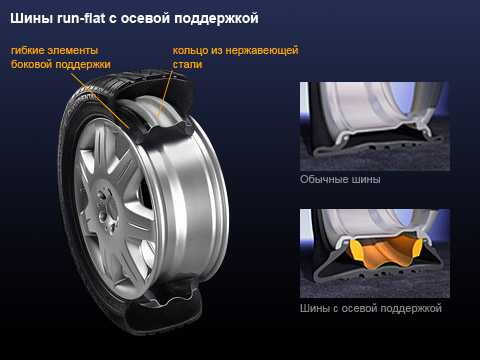 remain active.
remain active.
Maximum run-flat distance depends on tire manufacturer's recommendation, road conditions and vehicle load (average 80 km) Maximum vehicle speed 80 km/h.
Run flat tires are marked RSC . This abbreviation means RunFlat System Component - a single designation for all RunFlat tires installed on BMW, MINI and ROLLS-ROYCE vehicles. There is also a marking MOE - Mercedes Original Extended, a designation for all RunFlat tires installed on MERCEDES-BENZ vehicles, and AOE - Audi Original Extended, designation for all RunFlat tires installed on AUDI vehicles.
Tire operating conditions include the following:
Without a tire pressure monitoring system installed, the operation of RunFlat tires becomes extremely dangerous, as the driver may not feel the loss of pressure in the tire and continue to move without speed limits, making sharp turns and maneuvers.
All tire manufacturers with run flat technology accept them on standard rims. In addition, all tire manufacturers with run flat technology allow you to change tires every season without any negative consequences for the tires or rims themselves.
Let's sum up the advantages and disadvantages of tires with RunFlat technology.
We remind you that all RLD centers provide a service for the repair of tire side damage, including tires with RUNFLAT technology. The tire repair method we use is based on the complete restoration of the cord, followed by vulcanization of the damaged area without the use of traditional patches.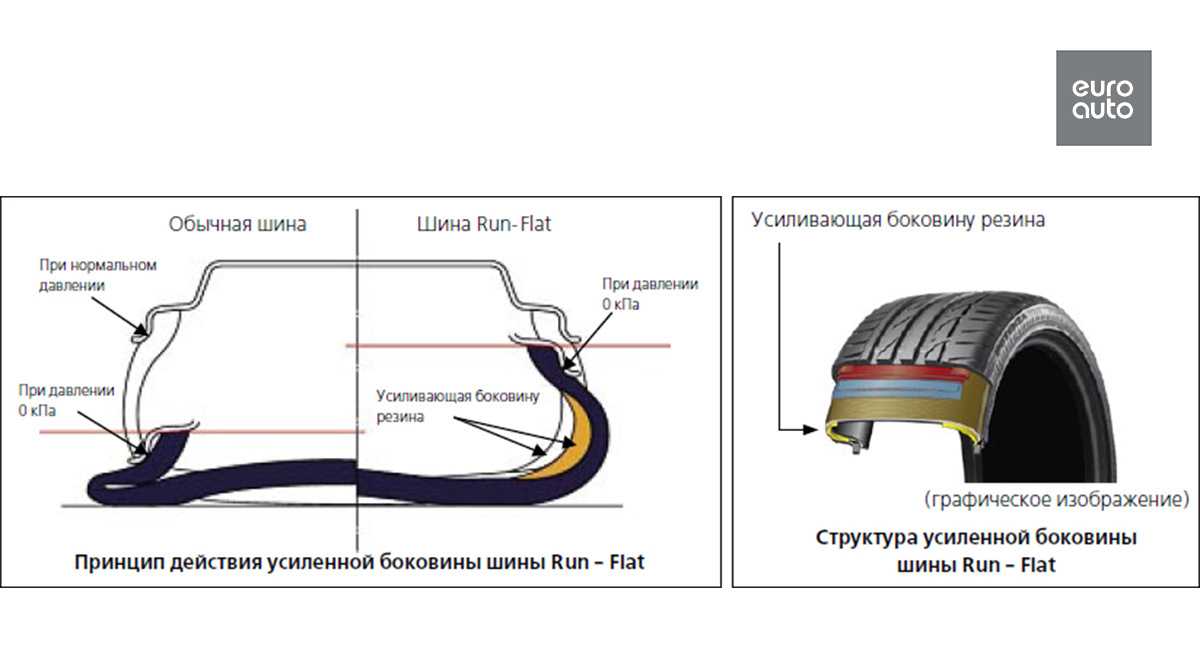 As a result of this tire repair, a hernia or side cut is completely eliminated, the tire is balanced in the same way as a new one and is subsequently operated without any restrictions.
As a result of this tire repair, a hernia or side cut is completely eliminated, the tire is balanced in the same way as a new one and is subsequently operated without any restrictions.
Oleg Rastegaev
Photo: Dmitry Pitersky
Expert group: Andrey Mokhov | Oleg Rastegaev | Yaroslav Tsyplenkov
How bad is the comfort of Run Flat tires with reinforced sidewalls, on which, after a puncture, you can reach the tire shop? Why are they used today not only by BMW and Mini, but also by Mercedes-Benz, Infiniti, Lexus? We took a Bavarian "three-ruble note" with two sets of tires, "safe" and regular, and went to the landfill.
Struggling with punctures in pneumatic tires, already at the beginning of the 20th century, tire manufacturers tried to use porous rubber and bandage rings - but these unpractical solutions took root only in motorsport and in military equipment. It was not until 1973 that Dunlop offered to reinforce the sidewalls with an additional layer of rubber, which, in the event of a puncture, acted as a cushion between the rim and the road and allowed the movement to continue even at zero pressure. The technology was called Dunlop Denovo, reinforced tires were installed as an option for Fiat Panda, Rover P6B cars. Later, the name Run Flat was assigned to these tires - driving on a flat tire, that is, on a deflated tire. And they began to be truly mass-produced only at the end of the nineties of the last century, when the technology was adopted by BMW: Bavarian cars began to be designed without niches for a spare tire at all.
The technology was called Dunlop Denovo, reinforced tires were installed as an option for Fiat Panda, Rover P6B cars. Later, the name Run Flat was assigned to these tires - driving on a flat tire, that is, on a deflated tire. And they began to be truly mass-produced only at the end of the nineties of the last century, when the technology was adopted by BMW: Bavarian cars began to be designed without niches for a spare tire at all.
Run Flat tires are not only an additional layer of rubber on the inside of the sidewall, but also a different design of the carcass, bead ring and bead cord adjacent to it spare-document. Moreover, it will not just be thrown into the trunk, but placed in a specially equipped niche under the raised floor, which, unfortunately, will significantly reduce the usable volume of the cargo compartment. So is it worth sacrificing the trunk for the sake of driving comfort? And by the way, how safe are run flat tires to drive when flat? I remember very well how, 14 years ago, at the Paul Ricard track, journalists sorted out a flat Pirelli Run Flat tire on a “one” BMW.
Pirelli uses the “Run Flat” marking, while other manufacturers use more sophisticated abbreviations: RSC (Michelin), RFT (Bridgestone) or SSR (Continental)
Take me, too, Pirelli - a modern model of the Cinturato P7 in dimension 225 /55 R17. Two sets. The one that Run Flat, with reinforced sidewalls, is also marked with asterisks: the tires are homologated for BMW and Mini cars. And the function of the aggregate carrier will be performed by the BMW 320d. His native tires are slightly lower, dimensions 225/50 R17, but may the tire gods forgive us for a five percent difference in profile height.
Due to the stiffer sidewalls and developed humps, it is more difficult to mount Run Flat tires
We mounted all tires on the same alloy wheels, which were promptly made for us by the Krasnoyarsk company K&K. Beading Run Flat tires is, of course, more difficult: not only is the sidewall much stiffer, but also the humps are higher (these are the tides that prevent the tire bead from sliding into the inner rim stream).